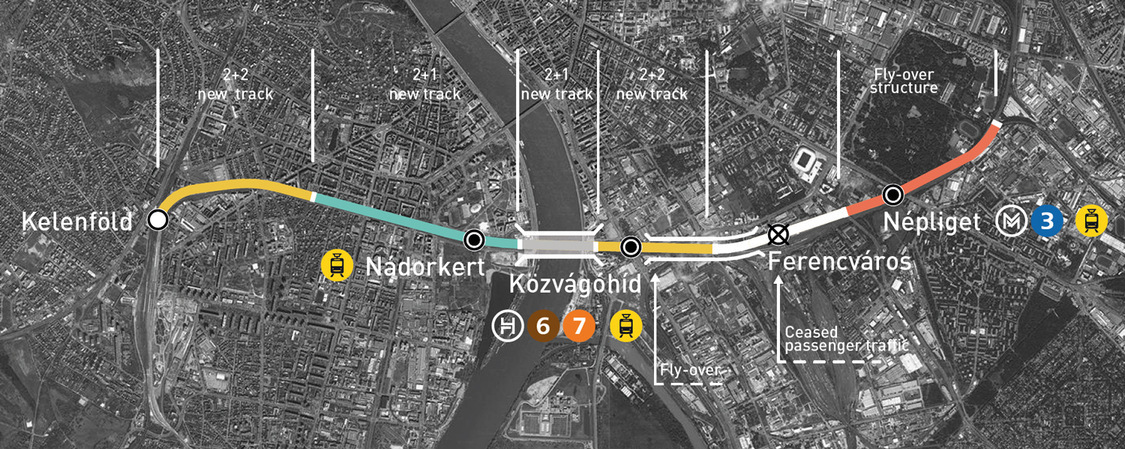Latest developments of Budapest’s railway lines – New Danube tunnel on the way?

Railway development in Budapest has recently got a kickstart as more and more projects are announced. The most recent development is going to be the all-encompassing Budapest Agglomeration Railway Strategy, or BAVS for short in Hungarian, which will involve several development projects with the aim to increase the number of passengers on the suburban railway lines by 80% by 2040 in order to mitigate the heavy car traffic besieging Budapest.
Index created a detailed explanation of every project currently going on, and in this article, you will get a glimpse into the total number of future developments that will hopefully make the Hungarian capital a greener, safer, and more liveable city overall. Conceivably, this will also help clean up the air in the capital and increase air quality.
It was the CEO of the Budapest Development Centre (BFK), Dávid Vitézy, who shared the launch of the Budapest Agglomeration Railway Strategy (BAVS) on his Facebook page. And, according to Index’s information, Vitézy signed the design contracts with the consortium of the Főmterv and RING engineering office for the development of the Budapest segment of the Hatvan and Újszász railway lines.

The contract has a total value of HUF 1,505 million (€ 4.3 million), with the support of the EU’s Cohesion Fund.
- Budapest’s new shopping centre opens with Hungary’s most spacious food court
- Metro line 1 upgrade plans to be completed soon, says Budapest mayor
One of the main problems of the railway system is that it has reached its maximum capacity, not to mention that many aspects of the system need modernising. Apart from that, the other problem is that the current terminal station system is not suitable for development, due to lack of space. BFK’s solution is the following:
“The only solution to this problem is to move beyond and untie the rigid system of terminal stations. On the one hand, […] the Budapest Suburban Railway Node Strategy aim[s] to more than double the number of trains crossing the city border at peak hours. On the other hand, by
developing inner-city connections, it will enable suburban commuters to reach several points of the city and at least three metro plus tram and bus lines instead of a single terminal station.
In addition, this solution will create rapid transit network elements for urban transport that are equivalent to metros on completely new routes.”

They plan to develop the Southern Belt Railway as well. The reconstruction of the Danube Bridge was also part of this project, and it will enable the “increase in capacity by laying track number three and partially number four, as well as installing three new stops at the backbone of urban transport and supporting large property development projects in the rust belt”.
However, the most ambitious project is probably the railway tunnel under the Danube which would connect Kelenföld Station on the Buda side with Nyugati Railway Station on the Pest side, underground. They said the following:
“This planned tunnel would partially transform the current Nyugati terminal station into a transit railway station, while Déli railway station, the terminal station on the Buda side, would be completely moved underground as a transit stop. The area of Déli Railway Station and parts of Nyugati Railway Station could be freed for a large-scale urban development project.”
So, this development would not only help with traffic and the overall capacity of the railway lines, but it would also create easier access to the inner parts of the capital, as well as create residential, park, or office areas.
You can also check out more information about their other development projects HERE.
Hopefully, this grandiose project will bring the development of Budapest and make it an overall more liveable and greener capital.
Source: Index.hu, Budapestvasut2040.hu





